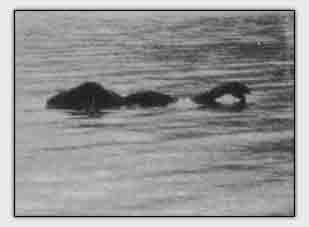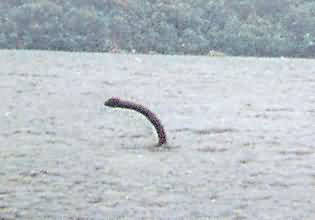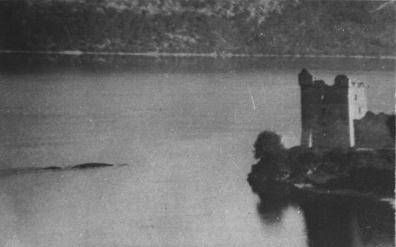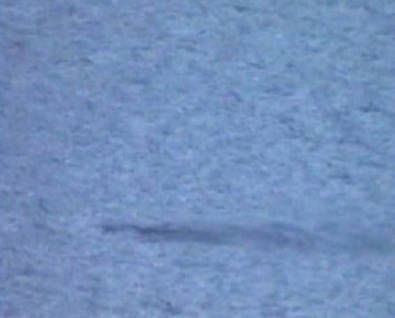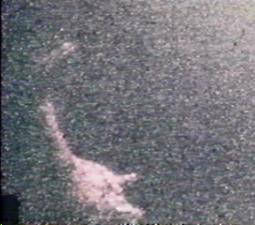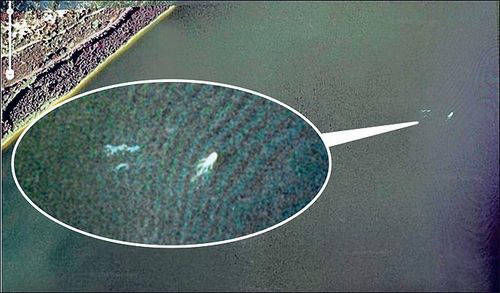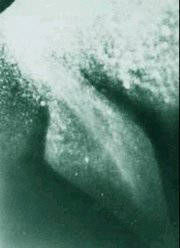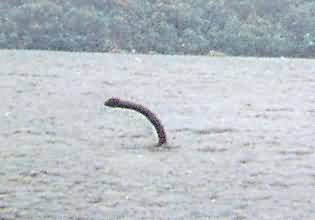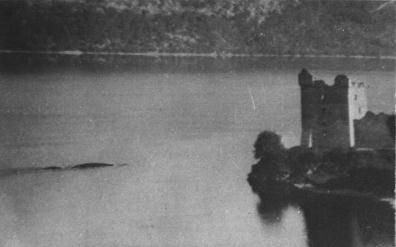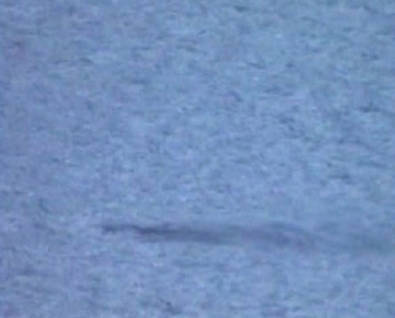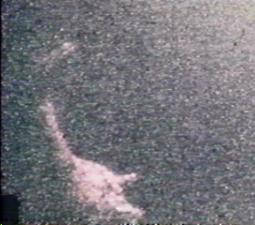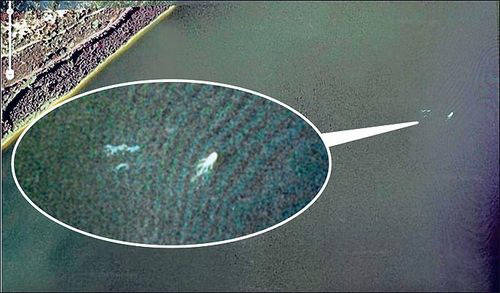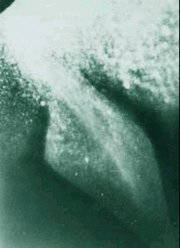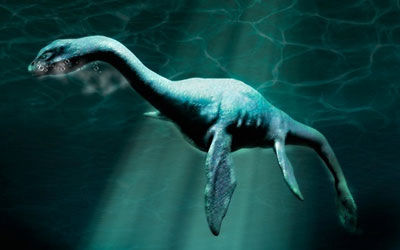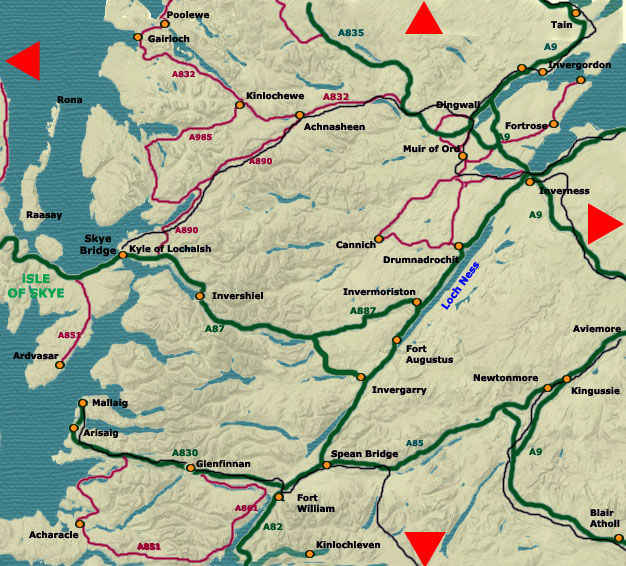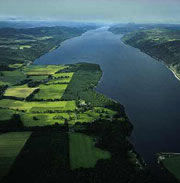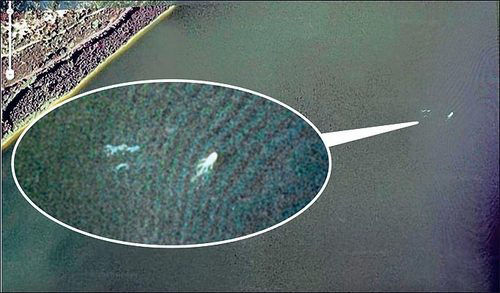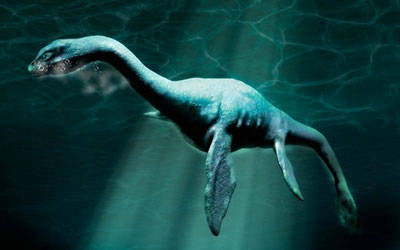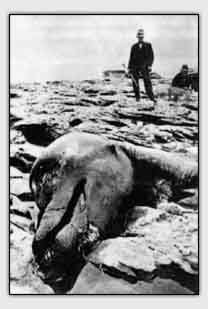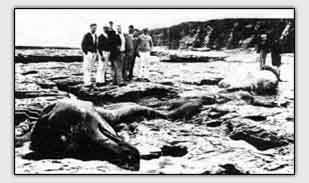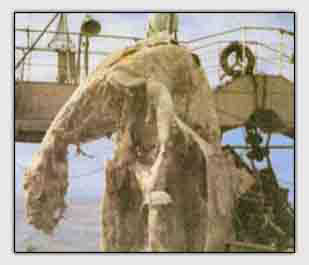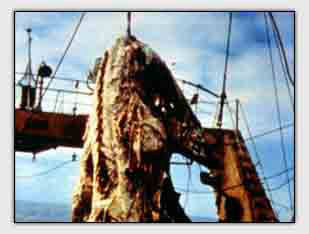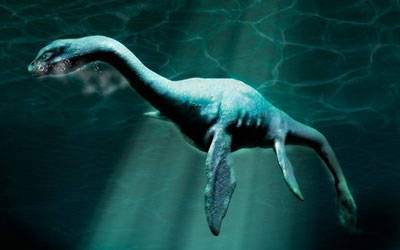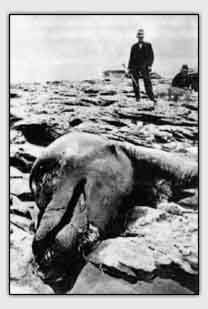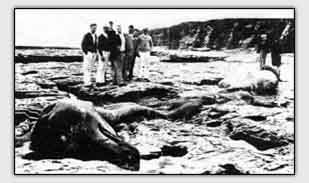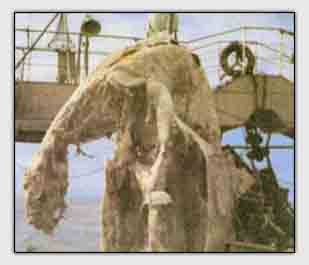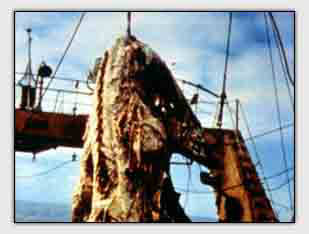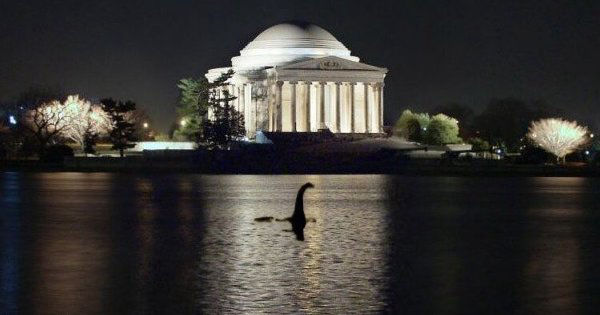During the Ice Age some 12,000 years ago, Scotland was covered by huge glaciers. When these glaciers started to melt, the slow-moving waters also carved rocky sides into lakes, along with the natural formation of "caves" and shelves. The water poured into the sea surrounding the area now known as Scotland, flooding much of the land and causing it to rise. This natural phenomenon permitted sea creatures to inhabit the flooded areas (dubbed "fjords"), where they also reproduced. When the floods began to dissipate some seven thousand years ago, the waters surrounding the land became lakes. However, it is said animals during this age also lost their connectivity with the "fjords," thereby trapping them in the newly developed lakes. Over the natural course of time, conditions in the lakes changed - salt water was eventually replaced by fresh rainwater, causing some of the sea animals to become extinct. Yet somehow others adjusted to the new atmosphere and survived.
Loch Ness is a deeply dark morass that is also located over an earthquake fault line, said to be the reason the lake is so vastly deep in areas. The bottom of the "loch" is layered with peat, which is likened to coal in that it consists of carbonized vegetable matter similar to moss. Peat particles float in the lake, making the water appear dark brown and in places almost black in color. The result is a rather murky body of water, making it difficult to see through clearly even when using sophisticated scuba diving equipment.
Some geographic experts claim Loch Ness is one of the deepest lakes in Europe - and if emptied, could be filled with three times the number of men, women and children from around the world.
The Loch Ness monster has been compared to the water-dwelling pre-historic plesiosaurs, which according to scientists became extinct more than sixty million years ago. Plesiosaurs were known to be cold-blooded creatures, garnering their heat from surrounding environments. Statistically speaking, plesiosaurs could not have possibly survived in Loch Ness because of the lake's icy waters; the creatures also breathed air, surfacing for oxygen regularly. If Nessie descended from the plesiosaurs, certainly more sightings would have been reported than is currently on record. Additionally, plesiosaurs thrived in salt water, casting shadows of doubt on whether they ever occupied Loch Ness.
However, in a dichotomous turn fossils of plesiosaur bones have been discovered near Loch Ness, providing evidence that Nessie may indeed be descended from them.
